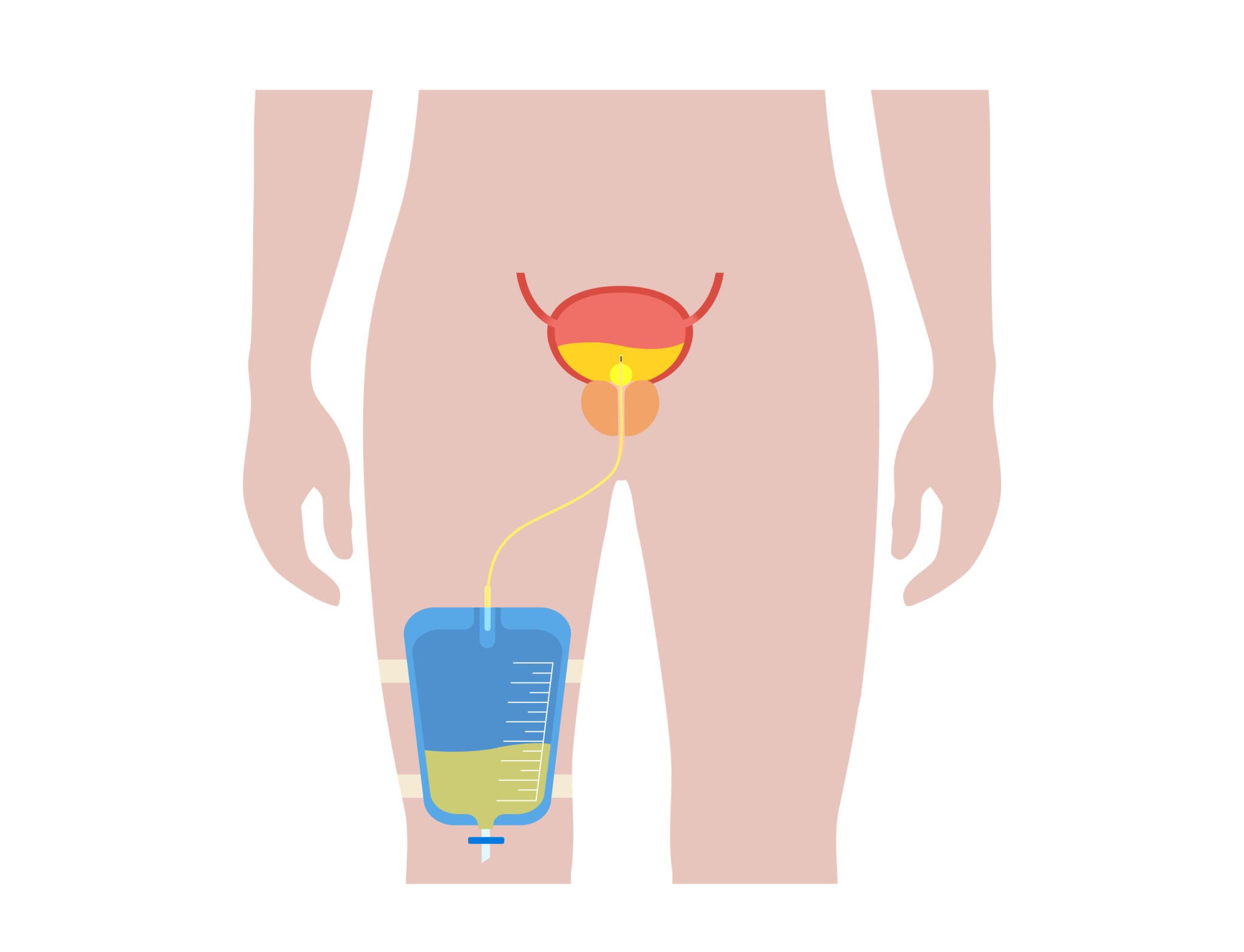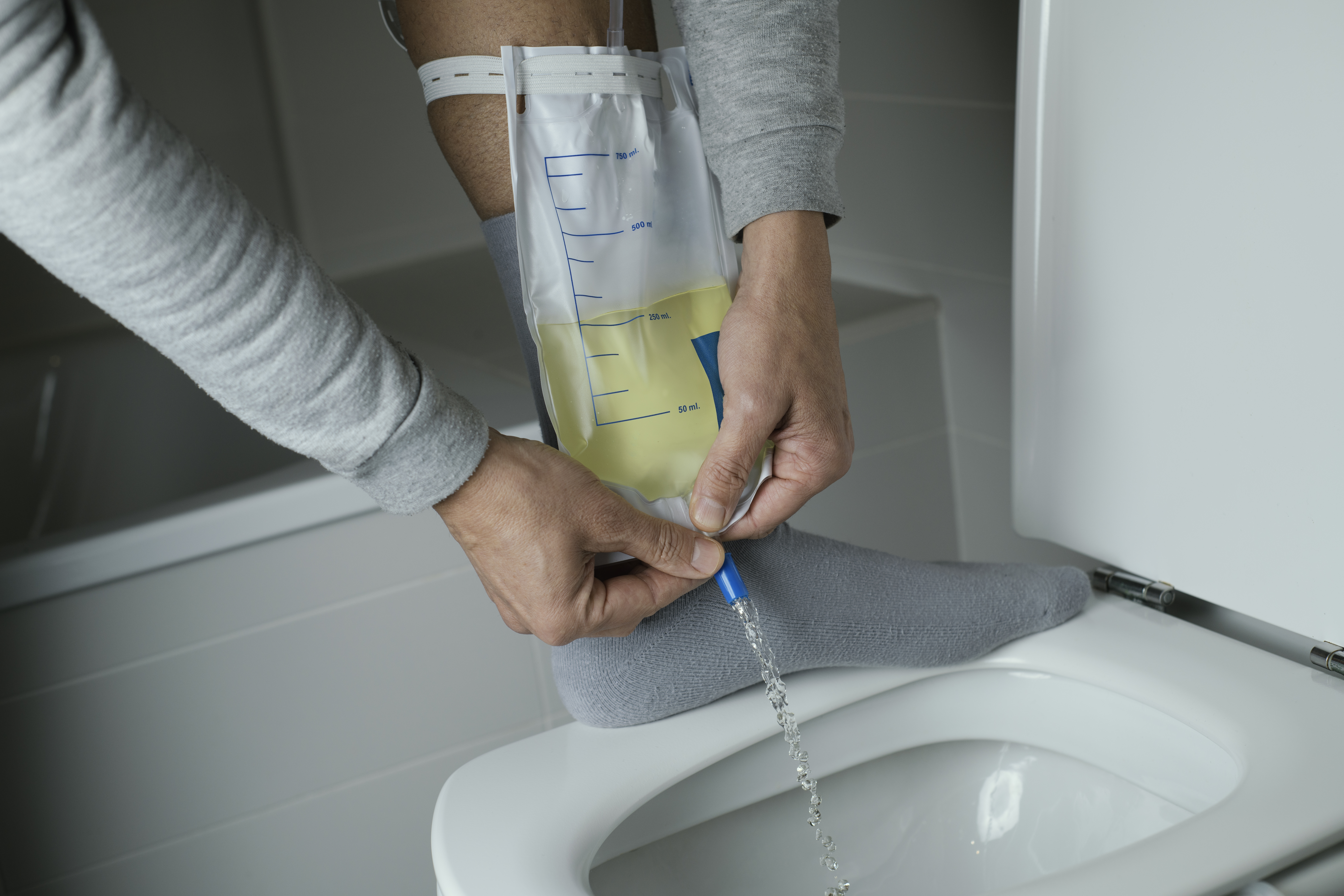Going home with a urinary catheter
Information for women, birthing people, and their families
This leaflet explains how to care for your catheter when you go home, and who to contact if you have any concerns. This leaflet is an addition to the Bladder care in labour and following birth leaflet.
We understand that going home with a catheter may be upsetting. You can speak with a midwife or doctor if you have any questions or concerns. You can also access our Birth Afterthought service. Their contact details are at the bottom of this leaflet.
How do I care for my catheter at home?
To avoid the risk of infection, follow these simple instructions.
Wash your hands with soap and water before and after touching your catheter.
If possible, shower (preferably) or bath daily. Do this with your leg bag attached. Empty the catheter bag before you wash. Once finished, dry the catheter and bag with a towel.
Wash the skin around the catheter daily, with unscented soap and water. Rinse and dry thoroughly with a clean wash cloth.
Always wash front to back where the catheter tube enters your body. This will prevent infection around the catheter site. Do this at least once or twice a day.
Do not use cream or talc around the catheter.
Your catheter bag should always be below your bladder; a leg bag can help you with this.
What is a leg bag?

The leg bag is attached to your calf or thigh by a pair of leg straps, a sleeve, fixation devices, or a special holster. How you wear the bag depends on what feels comfortable for you.
When attaching the leg bag, use the straps provided. Always make sure they are placed through the slots and behind the inlet tube. If they are placed over the tube, this can block it.
The leg bag can stay connected to the catheter for 7 days. Leaving the leg bag connected in this way helps to reduce the risk of infection.
How do I empty the catheter bag?

You will be shown how to empty the leg drainage bag by opening the tap at the bottom of the bag.
Empty the leg bag before it is full. This will prevent it from becoming heavy and causing discomfort. You should use your judgement to ensure your comfort and wellbeing.
Empty the bag into the toilet if possible. If you are unable to get to a toilet, drain the urine into a suitable container.
After emptying the bag, make sure you close the outlet tap properly.
Remember to wash your hands before and after emptying your catheter bag.
What should I do at night?
At night a larger drainage bag (night bag) can be connected to the leg bag.
Empty your leg bag before attaching it to the night bag.
Once you have connected the night bag, open the drainage tap on the leg bag. This will ensure that your urine drains from the leg bag into the night bag.
The night bag can be connected to a stand beside your bed.
Each morning, close the drainage tap to the leg bag and disconnect the night bag. Empty it down the toilet.
Dispose of the night bag daily, or every 5 to 7 days. This will depend on the night bag that you are given. Your midwife will tell you when it should be changed.
When will I go back to the hospital?
You will usually be sent home with a catheter for 7 days. Your midwife or doctor will tell you if this is any different. This allows your bladder to rest.
On the 7th day you will be asked to call Maternity Triage at 8am. They will tell you the time to come to hospital to have your catheter removed. Their number is at the bottom of this leaflet.
Due to patient safety, on rare occasions, you may have the removal of your catheter delayed. This will be discussed with you, and depend on your individual circumstances.
If you have any worries, questions, or feel unwell, please call Maternity Triage. Their number is at the bottom of this leaflet.
What if no urine drains from my catheter?
If no urine is draining from your catheter, check the following:
Is the tubing kinked?
The bag should be below bladder level.
Are you constipated (not pooing as often as normal, or finding it hard to poo)?
Is the drainage bag connected the right way up?
Have you been drinking enough (at least 1 to 2 litres in 24 hours)?
Try walking or moving around, as this may dislodge a blockage. If nothing drains and you are in pain, contact Maternity Triage for advice. Their number is at the bottom of this leaflet.
If your catheter falls out, contact Maternity Triage immediately.
Who do I contact if I have any concerns?
For help and advice, contact the Maternity Triage telephone service.
Maternity Triage
Telephone: 01227 206737
Contact the Birth Afterthoughts service, if you have any unanswered question about your experience. You can call or email, and ask to arrange an appointment with ‘Birth Afterthoughts’.
Birth Afterthoughts
Email
Telephone: 01227 864152 (9am to 3:15pm)
Further information

East Kent Hospitals. Bladder care during labour and following birth patient leaflet.
East Kent Hospitals. Bladder Care Guidelines for Labour and Post-Partum Period. Approved Guideline; April 2024.